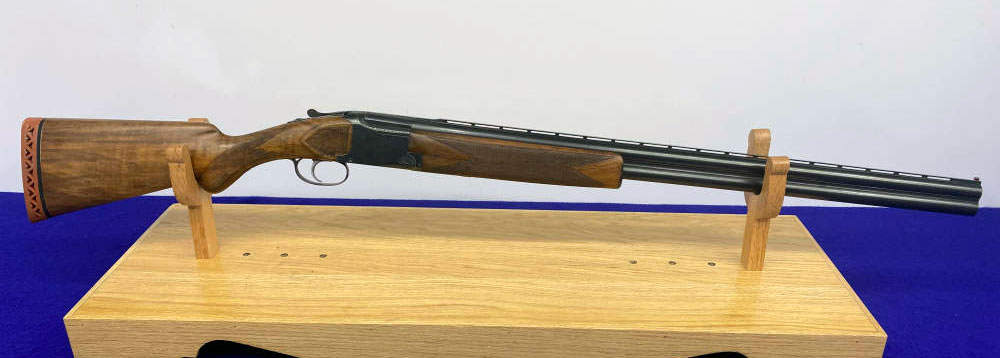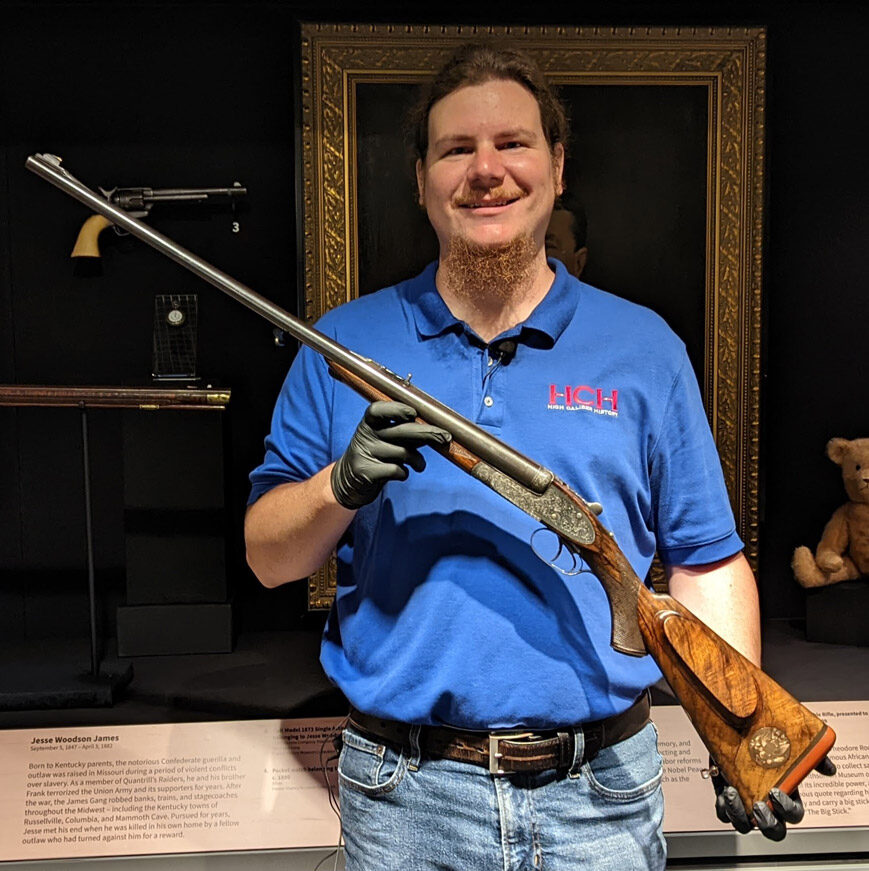
When the Browning Superposed was introduced in 1931, it marked both an end and a beginning. It was the final firearm design of the legendary John Moses Browning. His son, Val A. Browning completed the project after John’s death in 1926. As Browning’s first over-under shotgun, and one of the first commercially successful designs of its type, it set a new benchmark for sporting arms in the 20th century.
Manufactured in Liège, Belgium by Fabrique Nationale (FN), the Superposed combined elegance, strength and innovation. It’s design immediately set it apart from the crowded field of side-by-side shotguns then dominating the market.
Innovative Design
At its heart, the Browning Superposed was a modern solution to longstanding problems in break-action shotguns. Its boxlock action was stronger and more reliable than many of its predecessors. It addressed issues of hinge wear and barrel alignment that had plagued earlier over-under attempts.
The shotgun featured a single selective trigger, which was truly a pioneering element at the time. This allowed the shooter to choose which barrel fired first with simplicity and speed. With its ventilated rib 30-inch barrels fixed at Full choke (top) and Improved Cylinder (bottom), this early production example was tailored for versatility.
The addition of a red front sight with a brass mid-bead gave shooters rapid alignment. This feature was both functional and stylish in the 1930s.
Craftsmanship & Style
This 1931 example, serial number 303, is among the earliest production guns. This makes it not only a mechanically significant piece but also one of historical importance. The richly blued steel is complemented by finely checkered walnut furniture. It also has the distinctive round knob buttstock and checkered forend that would become hallmarks of the Superposed line.
Even in its standard configuration, the Superposed reflected a blend of artistry and utility. Higher-grade models such as the Diana and Midas would later push engraving and embellishment to extraordinary heights. The early guns like this one, however, are prized for their purity of design and direct connection to John Browning’s original vision.
Historical Context
The Browning Superposed entered the market at a pivotal time. Over-under shotguns were still a rarity. There were also plagued by mechanical weaknesses and expensive to produce. Browning’s design offered shooters an elegant, reliable alternative to the ubiquitous side-by-sides that had dominated the market for centuries. Despite the economic challenges of introducing a new gun in the middle of the Great Depression, the Superposed gained a devoted following thanks to its balance, durability and performance.
Except for a brief interruption during World War II, production would continue continuously until the 1960s. This cemented the Browning Superposed as one of the most respected sporting shotguns of its era. Its influence can be traced through generations of over-under shotguns that followed, from FN and Browning to countless other makers.
Condition & Collectability
This particular shotgun on Collector’s Elite Auctions remains in astonishing condition, displaying far less handling or wear than typically encountered on early-production examples. It gives no indication of its actual 94 years of age. Its combination of early serial number, preserved finish and clean walnut stock elevate it beyond the realm of a sporting arm. It is a collector-grade artifact.
For enthusiasts of John M. Browning’s work, few firearms hold greater significance than the Superposed. It was his last gift to the shooting world. Through it, his influence extended well beyond his own lifetime.
About the Author
-
Logan Metesh is an arms historian with a focus on history and development. He has a degree in historic preservation and has worked for the National Park Service and the Smithsonian Institution. The ease with which he can recall obscure historical facts and figures makes him very good at Jeopardy!, but exceptionally bad at geometry. Over the years, he has contributed to multiple books and written hundreds of articles for different publications. He is the owner of High Caliber History LLC and the host of the No Lowballers Podcast.
View all posts
